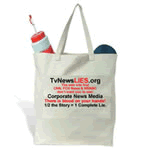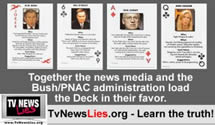For cosmic tire-kickers, NASA's Mars rovers were always special. Then, Curiosity came along: twice as long and five times heavier. The mission was like shot-putting a Mini Cooper 352 million miles, then perfectly hitting an entry window to the planet -- a zone measuring about 3 by 19 kilometers, a microscopic target after that long a distance.
You hit the thin atmosphere at 13,200 miles an hour -- 3-point-7 miles per second -- a real need to slow down, fast: enter friction and deployed heat shield, then 'chute, slowing from 900 miles an hour to 180 in just two minutes, then sky crane, to surface.
Cross your fingers, and hope a long list of mission-critical events, all closely timed and exactingly choreographed, happen precisely on cue. No pressure: We're just trying out a trunkful of new landing operations, is all -- Talk about a mission with lots of precisely-moving parts!
It was enough to make a master Swiss watchmaker jumpy. It all came off like clockwork, and without a hitch, as you know.
Mars Science Laboratory, Curiosity, safely landed, a whole ton. In feet: nearly 10 long -- not counting the arm -- 9 wide, 7 tall. About the size of a small SUV. Its prime mission will last one Martian year, or 23 Earth months.
The JPL center, of course, erupted into thanksgiving -- fitting, given that Curiosity took wing two days after Thanksgiving Day, last year, and is just now getting there.
* * * * *
That safe landing was a spectacular success by anyone's stingy standards. It takes a lot of extraordinary effort in math and the sciences to make such a stellar magic show work. It also takes a lot of people figuring out ways to successfully work with each other -- no small feat, either.
No matter how amazing the achievement, the questions always linger, and come up: Yeah, but is it really worth it? That question really says people do not know how little NASA costs us, and how much it gives back -- how many feathers NASA helps stick in Uncle Sam's, and Science's, caps.
Case in point: a 2007 study found most Americans believed NASA received $650 billion a year. It was actually $16 billion then.
How about this: We spend more, just buying military air conditioning -- and in only two spots on this Earth -- than NASA receives in a year to get acquainted with all of infinite space. Cooling facilities in Iraq and Afghanistan cost $20.2 billion a year. NASA gets about a billion less, at 19.
* * * * *
Before anyone launches on my position, I'm a veteran myself and resent NO military member trying to cool down in sweltering, 125-degree heat. Still, one has to marvel at costs that taxpayers will endure silently, and lesser amounts that require sudden strong voice. One has to wonder why it is we are not hearing Teabaggers screaming, "All that air conditioning money should be spent here at home!" It is said often enough about NASA.
* * * * *
Here are a few more budgetary mind-bogglers, if anyone's still interested in old-fashioned, outmoded notions, like facts:
- In FY 1999, NASA's budget was $14 billion -- big, but Americans spent 19 times as much at restaurants.
- IN FY 1999, the Defense Department received $21.47 for every dollar NASA received.
- For every dollar spent on the space program, an uber-conservative estimate of $8.00 in economic kick-starts returns to the economy. That doesn't count secondary effects, like innovations, new products, inspiration, and other positive ripples and waves along the way.
- Each of the 50 states receives an economic boost from the space program.
- During an 8-year period (1976-84), 352,000 mostly skilled jobs were created or saved -- no idea how many small businesses those 352,000 people and families supported or saved.
- In the 53 years from 1958 to 2011, NASA received $526 billion, averaging about $10 billion per year -- about what Americans spend on potato chips in a year and a half. Or, a third of Coke's gross annual profit.
- The greatest NASA budget, as a percentage of the federal budget, was 4.41% in 1966. For each year, from 1975 to 1986, NASA's budget was less than one percent.
- Since 1976, more than 1,500 documented NASA technologies have benefitted U.S. industry, improved the quality of life, and created jobs. The space shuttle program alone generated more than 100 technology spin-offs.
And so much more. Any way you look at the space program, it provides tons of bang for each small buck.
* * * * *
In terms of products, take a scan at this list and consider if you've gotten your penny's worth. Each item was created in conjunction, coordination, contribution, and/or association with NASA:
- Cell phones, scratch-resistant lenses, home insulation, advanced plastics, water filters, artificial heart;
- Memory foam, remote-controlled farm tractors, artificial limbs, CAT and MRI technology, fire-fighting gear;
- Athletic shoes, aircraft anti-icing systems, better breast cancer detection, LED chips, freeze-dried food;
- TV satellite dishes, aerodynamic bicycle wheels, smoke detectors, infrared cameras and thermometers;
- Joystick controllers, gas detectors, cooling suits, bar coding, simplified kidney dialysis, powdered lubricants;
- GPS, cordless power tools, thermal gloves and boots, vehicle insulation and tracking systems...
And more. (Sorry, though: Tang and Velcro were not created in or specifically for space, despite myths.) Add in all the consumer interest and spending on anything "space" over the decades -- billions right there: Think "Star Wars," "Star Trek," and "2001," among others, plus all of their spin-offs...
Plus, there's the added interest boost to kids wanting to go into scientific fields that will help continue and expand all those lists, while providing them good jobs and introducing them to the wider world of possibilities -- their futures and our own.
If we're going to keep leaning on Science to bail us out of our eternally-lacking wisdom, we should get cracking at producing more scientists.
This brings us full circle back to that question: Is NASA worth it, this "space" thing?
You might as well ask if the human species is worth it -- if America's children are worth the investment, getting them interested in science.
They could use all the inspiration they can get: Out of 34 countries, the United States comes in 14th in reading skills, 17th in science, and 25th in math.
Time to wake up: We're no longer Number One -- haven't been, not for some time.
Is it worth it now?!
Tomorrow: A wrap-up, including lots of informational links that couldn't squeeze in today.
































